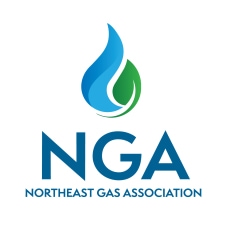Marcellus Shale
SUMMARY
- Major shale gas basin located in Appalachian region (WV, OH, PA, NY)
- Largest shale-producing region in the U.S.
- Provides supply security and cost competitiveness for high-priced Northeast region
- Responsible environmental management a key element of successful development
- NGA: production can yield multiple benefits: increased supply; source diversity; improved air quality; proximity to high-demand, high-cost demand market; local and state tax revenues; jobs
The Appalachian region is the largest natural gas production area in the United States, and the Marcellus Shale basin is the largest source of that regional production. The Northeast, long accustomed to being "at the end of the pipeline," now finds itself located next to - and indeed on top of - one of the largest natural gas basins in the U.S.
Location
This shale gas formation extends from West Virginia into Ohio, Pennsylvania and New York.
As shown in the map, its geographic area (around 95,000 square miles) is quite large, leading to great expectations for the ultimate size of the economically recoverable resource base. In a
July 2011 report, the U.S. Energy information Administration (EIA) reported the share of Marcellus acreage by state as follows: Pennsylvania, 35.35%; West Virginia, 21.33%; New York,
20.06%; Ohio, 18.19%; Virginia, 3.85%; and Maryland, 1.09%.
Appalachian Production
The Marcellus/Appalachian Shale region is the largest shale gas producing region in the U.S. - and is estimated to have the largest resource base.
Output has grown to 35 Bcf/d. U.S. EIA observed in February 2022 that "In recent years, the Appalachia region has provided the largest share of U.S domestic natural gas output, accounting for
one-third of L48 production annually since 2016. Although production growth has slowed in recent years because of less drilling activity and emerging pipeline capacity constraints, Appalachia
well-level productivity has been increasing, offsetting some of the drilling decline.
We estimate that production from the Appalachia region will grow by 0.3 Bcf/d in 2022 and 0.7 Bcf/d in 2023." In April 2022 EIA further observed: "Natural gas production in the Appalachia
region grew by 1.9 Bcf/d to 35.0 Bcf/d in 2021. Production growth in Appalachia over the past 10 years has been aided by improved productivity from wells drilled, pipeline buildouts, and
increased takeaway capacity. However, regional transportation capacity limits have now been reached."
Annual production in Pennsylvania alone has grown from 1.3 trillion cubic feet (Tcf) per year in 2011 to over 7.5 Tcf in 2021. Pennsylvania is the second largest gas producing state in the
U.S., after Texas.
Managing Environmental Issues
Environmental issues associated with unconventional gas production are multiple but manageable. The issues include infrastructure development, land and water access, air emissions, and water
treatment (water is one of the key ingredients in the hydraulic fracturing process used to dislodge the gas from the shale rock formations). Responsible production is not only achievable but
essential.
The MIT study on natural gas from June 2011 notes that "the environmental impacts of shale development are challenging but manageable." State and federal agencies have regulatory oversight,
with state environmental agencies holding primary responsibility over the drilling process. Industry has the responsibility to ensure that the entire process is conducted in an
environmentally safe manner, and to follow "best practices."
In an April 2009 report entitled "Modern Shale Gas Development in the United States: A Primer," issued by the U.S. Department of Energy (DOE), the following was noted:
"The primary differences between modern shale gas development and conventional natural gas development are the extensive uses of horizontal drilling and high-volume hydraulic fracturing. The use of hydraulic drilling has not introduced any new environmental concerns. [emphasis added] In fact, the reduced number of horizontal wells needed coupled with the ability to drill multiple wells from a single pad has significantly reduced surface disturbances and associated impacts to wildlife, dust, noise, and traffic...Hydraulic fracturing has been a key technology in making shale gas an affordable addition to the Nation's energy supply, and the technology has proved to be an effective stimulation technique. While some challenges exist with water availability and water management, innovative regional solutions are emerging that allow shale gas development to continue while ensuring that the water needs of other users are not affected and that surface and ground water quality is protected. Taken together, state and federal requirements along with the technologies and practices developed by industry serve to reduce environmental impacts from shale gas operations." (p. ES-5).

